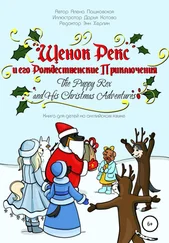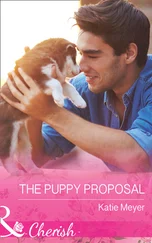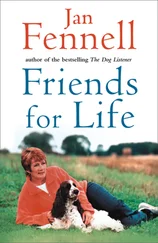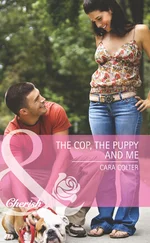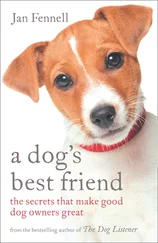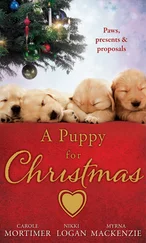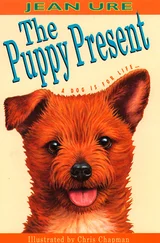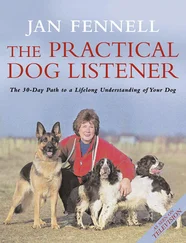Many people begin weaning with a cereal, such as porridge mixed with milk. Some opt for tinned puppy food. Others go for kibbles of ‘complete food’ made up of carefully selected ingredients that constitute an ideal diet. Many people opt for raw meat.
The puppy will by now have a full complement of teeth coming through, but their jaws are still too weak for it to crunch anything and its throat is still too narrow to swallow food of any size. It is vital that whatever food you choose to introduce, it is of the right consistency. Porridge with milk should be as smooth as possible, while kibbles should be soaked in cold water overnight then mixed in a food processor for better consistency. Tinned food must also be softened so that it is palatable for the puppy. If you go for the raw-meat option, make sure it is minced well.
Follow these instructions for the first feed.
1. Pick up the puppy gently, speaking to it softly. Don’t make any sudden movements.
2. Pinch together your thumb and third and fourth fingers. Scoop the food onto your fingers, then put it under the puppy’s nose for a moment or two so it can smell it.
3. How quickly it accepts the food depends on personality. Some will only need to smell it and they will be digging in, while others will be cautious and unsure. If they are enthusiastic, be careful they don’t bite. If they are reluctant, be patient.
4. When the puppy has eaten, stroke it softly with one finger and give it some gentle words of praise.
This is the first time the puppy will have associated you with the providing of food. It is vital that you make it a good association by taking things slowly and doing all you can to make it as pleasant an experience as possible. Time spent getting this right can make the difference between a relationship that works and one that doesn’t. Don’t rush it.
TOILETTING
Until now, as we have seen, the mother both stimulates defecation and cleans up afterwards. This is no longer the case. By the start of the third week, the puppy will have begun to make its first moves away from the whelping box. Generally the front of the box is removed around this time, allowing them to move a few feet away from their sleeping area towards the boundary of the den.
They will begin to defecate and urinate on their own. This new independence coincides with the mother’s gradual removal of herself from the scene.
A puppy of three to four weeks will urinate 12 or more times a day and will open its bowels five to six times a day.
At first the puppy will probably do its toiletting around the den. Dogs are by nature clean creatures so the puppy will try to put as much distance as it can between its sleeping and feeding area and its toilet area. You must ensure you have something in place for puppies to go to the toilet on. There are plenty of alternatives: newspapers or absorbent padding or perhaps wood shavings (make sure they are dust-free).
The puppy isn’t going to get to this area every time, of course, so during this phase it is vital you keep the bedding area immaculately clean. You can buy absorbent bedding that takes wetness through to the bottom. A lining of newspaper between this and the floor will provide another layer to take up moisture. This should be changed as often as need be, perhaps even two or three times a day during the early stage of toilet training.
Dogs prefer to do their toiletting in a natural environment so it is good for both you and your dog if you progress the training to a garden or outdoor area as soon as possible. You should start doing this at about four weeks of age. They should have got the hang of walking by then.
• Accompany the dog to the toilet first thing in the morning, after meals and when it wakes from a sleep.
• Stay with it in the garden or outdoor area. When you see it squatting, give it a food reward and use a word such as ‘empty’ or ‘clean dog’.
There are going to be occasions when it catches you out, so be careful to line the dog’s route from the sleeping area to the garden with whatever it is you are using to absorb the mess. The ideal thing would be a flap leading straight from the den to the garden.
If the puppy has accidents away from the toilet area, the important thing is not to chastise it. Clear it up without a word. The key to toilet training is making it a good association, so anything negative at this stage is unhelpful. With a positive association being built all the time, it won’t take the puppy long to make the connection between wanting to go to the toilet and going outside.
* * * * * * *
By eight weeks of age, the puppy will be ready to move on to a new home without its mother and siblings. The better the care it has received in these early weeks, the more easily it will cope with the trauma of the change of environment. In the next chapter, you’ll find advice for new owners on choosing a puppy at this stage.
Chapter 3 - Choosing your Dog
Before looking at the details of how to introduce a puppy into your home, it is important to discuss how you acquire a new dog. To my mind, there are only two sources from which we should buy dogs: respectable, responsible breeders and registered rescue centres or dogs’ homes.
There is, I know, a wide range of alternative sources – from pet shops and so-called licensed kennels, classified ads or even from a chance encounter with a seller in a pub or at a fairground.
The problem with buying from a stranger is obvious, in that you will have no comeback if anything goes wrong. A friend of mine once saw a batch of dogs for sale at a horse fair. There were no clues as to where these dogs had come from. Their owners had only one interest: making money. My friend was a soft touch and took pity on one dog in particular. During the next two years she spent more than £2,500 on vets bills, because it turned out the dog was riddled with worms and suffered from a variety of stomach problems. The crucial point here is that she had no way of seeking compensation from the people who sold her that dog. She didn’t even get a contact name.
This type of trade is sadly on the increase. The growth of so-called puppy farms, where dogs are bred in a factory-style environment, is something I abhor. Here in the UK the vast majority of pet dealers and licensed kennels are supplied by puppy farms, and owners who buy from them will often be allowed no more than 48 hours in which to return their dogs. How on earth is anyone supposed to decide whether they will be able to share their life with a dog in that space of time? Health problems may not have emerged within that period, and the dog’s true personality might be masked beneath its anxiety about the new surroundings.
It is my firm belief that if at all possible an owner should be able to meet – at least – the puppy’s mother before taking the dog away. This is something I will explain in more detail in a moment. You should be able to visit the breeder and see the puppy interacting with its mother and siblings. Be suspicious if you can’t; in puppy farms, mother and pups are separated early on. The absence of the mother may mean that the seller is a third party, whose motives are purely to do with money rather than the welfare of the dogs in their protection.
No reputable breeder or rescue centre would sell a dog without guaranteeing that the owner could return the animal to them if they were unable to keep the dog for whatever reason. The dog cannot lose under this arrangement. If it fits into a happy home it will enjoy a long and hopefully rewarding life there. If not, it will return to a place where its best interests are safeguarded.
Owners who leave themselves with no comeback are not able to return an unwanted dog. Many will, of course, ensure they are given good homes but, sadly, many more will not. And that is something I cannot condone.
Читать дальше

